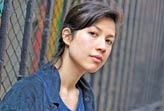Top News
Space station gets upgrade
Updated: 2011-05-21 07:58
(China Daily)
APE CANAVERAL, Florida - Space shuttle Endeavour's astronauts accomplished the main objective of their mission on Thursday, installing a $2 billion cosmic ray detector on the International Space Station to scan the universe for years to come.
 A crew member of the International Space Station recorded this image of the space shuttle Endeavour as the two spacecraft made their relative approach on Wednesday. Astronauts aboard the shuttle accomplished their main mission of installing a $2 billion cosmic ray detector. [Photo/Agencies] |
However, hours after astronauts finished their work, NASA said it might add one more job: a detailed inspection this weekend of a troublesome damaged thermal tile on the space shuttle's belly.
The astronauts used a pair of robotic arms to remove the Alpha Magnetic Spectrometer from the shuttle and then hoisted it onto the sprawling framework on the right side of the station. It marked the grand finale of the US' role in the construction of the orbiting outpost, which began 13 years ago.
The instrument, which has a 0.91-meter magnetic ring at its core, is the most expensive piece of equipment at the space station and certainly the most prominent scientific device. It will search for antimatter and dark matter, and hopefully help explain how the cosmos originated.
Nobel Laureate Samuel Ting, the principal investigator, personally relayed his thanks from Mission Control in Houston. He worked on the project for 17 years and fought to get it on a shuttle, after its flight was suspended several years ago.
"This has been a very difficult experiment, and I think in the next 20 to 30 years, nobody will be able to do such a thing again," Ting told the astronauts. "I hope together with you, we will try to make a contribution to a better understanding of our universe."
Shuttle commander Mark Kelly said he held his breath as the spectrometer was latched down.
"It's a $2 billion cosmic particle detector, it's got 600 physicists that have been working on it ... and it was all in the hands of four of my crew members," Kelly said in an interview with The Associated Press. He said he told his crew afterward, "Isn't it a relief that it's no longer our responsibility, that we safely got it installed?"
NASA engineers spent Thursday analyzing the damage to seven spots on the shuttle's belly where thermal tiles were gouged and nicked during Monday's liftoff, the second-to-last for the shuttle program. They determined that five spots, and probably a sixth, posed no danger to the shuttle. However, they weren't sure about the last one.
They have tentatively scheduled on Saturday a closer inspection of the gouge, which is about the size of a deck of cards. The shuttle astronauts will use a camera and a laser attached to a giant boom to examine the suspected tiles, said LeRoy Cain, the deputy shuttle program manager.
A similar gouge was found on a 2007 Endeavour flight - coincidentally commanded by Kelly's identical twin brother Scott - and also received additional inspection, but was determined not to be a problem.
The damage was spotted in photos snapped by the space station crew just before Endeavour docked on Wednesday. The shuttle performed a slow backflip for the cameras, a customary procedure put in place after shuttle Columbia disintegrated as it re-entered Earth's atmosphere in 2003.
However, the photos were too fuzzy to make engineers comfortable that the heat shield is safe, Cain said. If there is a problem, spacewalking astronauts could fix it with a space version of a caulking gun or other patch kits.
Mark Kelly said he's being kept abreast of the developments and is not particularly concerned. On his 2006 shuttle flight, similar damage was detected and later cleared for re-entry, he said.
The 7-ton Alpha Magnetic Spectrometer may vindicate the scientific purpose of the space station, according to astronauts, researchers and others.
"A science voyage of discovery into our galaxy and beyond has started today from the International Space Station," said Mark Sistilli, who has served as NASA's program manager for the spectrometer since 1994.
Ting, a physicist at the Massachusetts Institute of Technology, leads the international team of 600 scientists supporting the spectrometer.
Weary after being awake all night, Ting said on Thursday afternoon that the spectrometer was turned on and gathering data within a couple hours of being installed, with thousands of particles passing through the magnet. Everything seems to be working perfectly, he said, but the trial period will continue for another few days before data collection begins in earnest.
The magnetic field generated by the precision instrument bends the path of incoming cosmic particles, and eight detectors attempt to identify them in the nanoseconds it takes to travel through the magnet.
Two astronauts - Gregory Chamitoff and Andrew Feustel - will venture out on Friday for the first of four spacewalks to perform some station maintenance. On Saturday, the two crews will get an unprecedented VIP call - Pope Benedict XVI will make the first papal call to space. Two Italians are on board.
Endeavour will conclude its final voyage with a landing on June 1. NASA is shutting down its shuttle program this summer after 30 years, to focus on interplanetary travel. One more mission remains in July by shuttle Atlantis to carry up one last load of supplies and equipment.
Associated Press
E-paper

Thawing out
After a deep freeze in sales during the recession, China’s air conditioner makers are bouncing back
Cool Iron lady
Of good and evil
Build on security initiatives
Specials

Memory lanes
Shanghai’s historic ALLEYS not just unique architecture but a way of life

Great expectations
Hong Kong-born singer songwriter rises to the top of the UK pops.

A diplomat of character
Belgian envoy draws on personal fascination to help build China ties.
